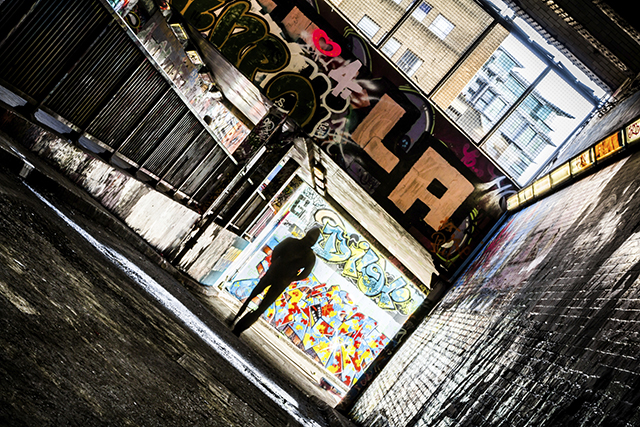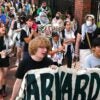
Photo: Adam Petto/Getty Images
Any angler will tell you: “If you want to catch fish, you have to go where the fish are.” The same is true when fishing for street crime.
In the case of crack cocaine, you need to focus on urban, poor, African-American neighborhoods, because trafficking is primarily the work of dealers in those communities. The U.S. Sentencing Commission, Harvard Law School Professor Randall Kennedy, and others agree about the demographics of the crack trade. Indeed, no one seriously disagrees. The only question is how to address the problem.
The Daily Signal depends on the support of readers like you. Donate now
“How,” not “whether.” If the stop-question-and-frisk technique is effective, then the surest way to discriminate against African Americans is to abandon the use of that approach in drug-infested black-majority neighborhoods. Why? Because 99-plus percent of the residents of those neighborhoods are not involved in drug trafficking. Denying them the benefit of a worthwhile law-enforcement technique would only worsen their plight.
The only question, then, is how to solve the problem, and this requires us to address three important, difficult, and unavoidable questions. They’re important, because they shape the policy debate. They’re difficult, because they involve contentious subjects. And they’re unavoidable, because no one can honestly address this subject without taking a position on them.
1. Is this technique useful? Yes. Street cops think so; just ask Big Cat and Gesuelli, the two Newark officers featured in The Atlantic’s April feature story,“Is Stop and Frisk Worth It?” Police administrators think so, as witnessed by the strong endorsements from former NYPD Commissioners William Bratton and Ray Kelly. Criminologists also think so. “Broken Windows,” the 1982 Atlantic article by James Q. Wilson and George Kelling, formed the basis for today’s preventive street policing. Franklin Zimring, Chair of the Berkeley Criminal Justice Studies Program, analyzed New York City data and concluded in 2012 that the crime reduction correlated positively with the NYPD’s law enforcement strategy, which includes preventive street patrol—not with economic and sociological explanations. Accordingly, there is experiential, theoretical, and possibly empirical support for the technique’s effectiveness.
It is easy to understand why critics discount its benefit for law-abiding black residents. Offenders are arrested, convicted, sentenced, and imprisoned—events that lend themselves to statistics, photographs, and media stories. Crimes that do not occur—and people who do not become victims—are invisible. Yet the lives saved and improved by aggressive street patrol are real, even though they are unidentifiable.
2. Is this technique inherently bigoted? No. Cops of all races stop and frisk diverse suspects. Crack trafficking and violent crime are concentrated in minority communities, and, as Zimring has noted, “preventive street policing cannot be made much more colorblind than the demographic patterns of violent crime.” The law also forbids bigotry. A cop may stop and frisk a suspect only if he has a “reasonable suspicion,” based on the facts of each case, that a suspect is involved in crime or is armed. An offender’s race can help the police identify a known suspect, but his race cannot make him into a suspect. Yes, street cops sometimes make mistakes, but the Supreme Court allowed for those errors by adopting a low threshold for stops and frisks. Reasonable suspicion does not require an officer to be right, or even to be more likely right than wrong, so we should not be surprised if the police often err.
Moreover, selling crack is illegal, so offenders are discreet, not obvious. And crack dealers arm themselves because they cannot call the police if someone steals their goods or refuses to pay; violent retribution is their only recourse. Street cops therefore face potentially deadly risks when they question suspects in close quarters. The fact that police perform a high number of frisks without discovering any weapons can be more likely attributed to caution than racism.
3. How can we prevent this technique from being used oppressively? The remedy is not to outlaw the technique but to take these four steps.
Step 1: Ensure a diverse demographic profile within the police department. New York City and Newark have done that, as Bergner noted. It reduces the risk that the local police will be seen as outsiders “occupying” a community.
Step 2: Train and retrain officers in the law, and include the NAACP and ACLU as academy lecturers.
Step 3: Discipline street cops for unduly aggressive stops and frisks, and have them apologize sometimes if they are wrong. Officers will object that admitting a mistake undermines the authority necessary to maintain dominance in a world of lions, not lambs. Sometimes this is true, but not always.
Step 4: Have senior commanders brief neighborhood residents on what the police do and why. If the community views the police favorably, politicians and the media will come around.
One last point: Don’t blame street cops for problems they did not cause and cannot remedy. Ask yourself, What is the ultimate concern here? Is it that there are too many stops of blacks in Brownsville and not enough of whites in Sutton Place? The real problem is the high concentration of poor blacks in blighted communities who turn to drugs as an escape or as the most readily available income-generating opportunity. Make progress on that problem, and the stop-and-frisk problem will fade away.
Forbidding the police from properly using this technique, however, cannot remedy the real problem—unless the theory is that outlawing this technique will so terrify Sutton Place residents with the prospect of returning crime to its 1960s levels that residents eventually will pony up whatever funds are necessary to solve the real problem. I’m cynical enough to believe that that strategy underlies some of the criticism, but I’m hopeful enough to bet that it won’t work. The people suffering from drug trafficking and crime deserve better than political gambits, and they deserve it today, not down the road.
Originally published in The Atlantic.




























